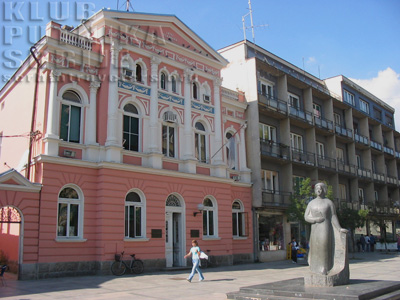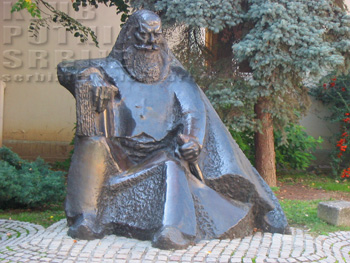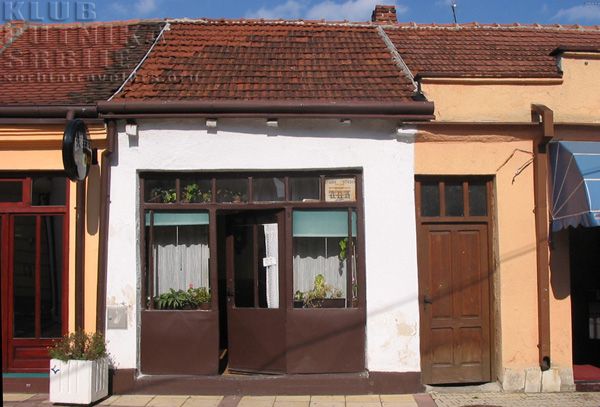Valjevo

Valjevo is one of the most significant cities of Western Serbia, located in a valley between the mountain ranges of Maljen, Povlen and Vlasic. Fast mountain rivers Obnica, Jablanica and Gradac all stream downhill making the Kolubara River, which runs through the town.
According to the census from 2002, Valjevo has the population of 61,270. The oldest part of the town, Tesnjar, is a cobbled museum-street crowded with little cafés and craftsmen's shops, while the town center, built in the old European architectural style, with its squares and wide streets, lies on the other side of the river.
In the vicinity of the town there are numerous monasteries such as Pustinja, Lelici and Celije, as well as the Divcibare winter resort on Maljen Mountain.
{tab=history}
History of Valjevo
The frist mention of Valjevo dates from 1393, but the area has been inhabited ever since the prehistoric times owing to its fertility and good geographical position. Although there are many theories and assumptions on how the town got its name, it is commonly believed that Valjevo is a possessive adjective of the old Slavic name Valj (Valjevo- the property of a certain person named Valj). Back in those days (14th-15th century) the town was an active trade center of medieval Serbia.
In 1459 Serbian Kingdom was conquered by the Turks, which hindered the development of the area. It was not until the First Serbian Uprising in 1804 that the town was liberated, but it only started developing in 1830's under the rule of Milos Obrenovic. The preserved cobbled streets of Tesnjar date from this period, while the part of the town on the left bank of the Kolubara River wasn't restored until 1855.
During the WWI the town housed a large hospital (Kolubara Battle) and has undergone severe damages, as well as in the WWII.
Getting to Valjevo
Valjevo has good bus connections with all the major cities in Serbia. The main railroad connecting Belgrade and Bar (in Montenegro) also goes through Valjevo. There are around 20 daily buses operating between Valjevo and Belgrade.
Valjevo can be reached by car following the main road from the town of Sabac, as well as from nearby Pozega and Bajina Basta (the road goes through the mountains Zlatibor and Tara, and then over Maljen and Povlen).
The Valjevo Bus Station is close to the town center (No. 8, Klanicka street, phone no. 014 / 221-482) and next to it there's a taxi stop (taxi association "Patak", phone no. 014 / 239-970).
The railway station is in the outskirts of the town, about half an hour walk from the center (turn left at the Bulevar Palih Ratnika 91/92, then follow the rail tracks until you reach Mirko Obradovic Street, and turn right in Haljduk Veljko Street).
A number of daily trains connect Valjevo with Belgrade, Novi Sad and Subotica in the north, and Pozega, Uzice, Priboj and Prijepolje in the south.
{tab=things to see}
What to see in Valjevo?
Valjevo is a peaceful small town split in two by the Kolubara River. The old part, Tesnjar (meaning a narrow street) lies on the right bank, with its lively main street (Bircaninova) where you can explore old Balkans-style houses, craftsmen's shops or modern cafés.
Just above Tesnjar, on the Vidrak Hill, there is a monument to the soldiers killed in WWII, in a beautiful park offering some excellent views of the town and surrounding hills.  The monument is actually a communist-fashion giant metal figure of a soldier with clenched fists pointing to the sky. This park is the main picnic-place in Valjevo and is especially lively on weekends.
The monument is actually a communist-fashion giant metal figure of a soldier with clenched fists pointing to the sky. This park is the main picnic-place in Valjevo and is especially lively on weekends.
The modern city centre is located on the left bank, connected with Tesnjar by a number of bridges. It is made up of the Vuk Karadzic, Vojvoda Misic and Karadjodrjeva streets, with Desanka Maksimovic and Vojvoda Misic squares, the Grammar School, a museum, numerous cafes, shops, public buildings (post office, banks) and hotels. The architecture of the centre is that of a typical Central European town from the 19th century.
The oldest building in Valjevo, Muselimov Konak, is also in the centre, on Desanka Maksimovic Square. Just next to the Grammar School is the National Museum of Valjevo (3 Vojvoda Misic Square, phone no. 014 / 221-041, 224-641; open 10am- 5.30pm Mon-Fri, 10am-1pm Sat, closed on Sundays) holding about 10,000 items from archeological, historical, art and ethnographical collections.
Not far away to the north there is the church “Pokrov Presvete Bogorodice” (devoted to the burial shroud of the Mother of God) erected in 1838 by Milos Obrenovic. A little bit farther, in the northern part of the town just across the Prota Mateja Nenadovic Boulevard, you can climb a small hill to the Nenadovica Kula (Nenadovic's Tower) built in 1813.
{/tabs}

